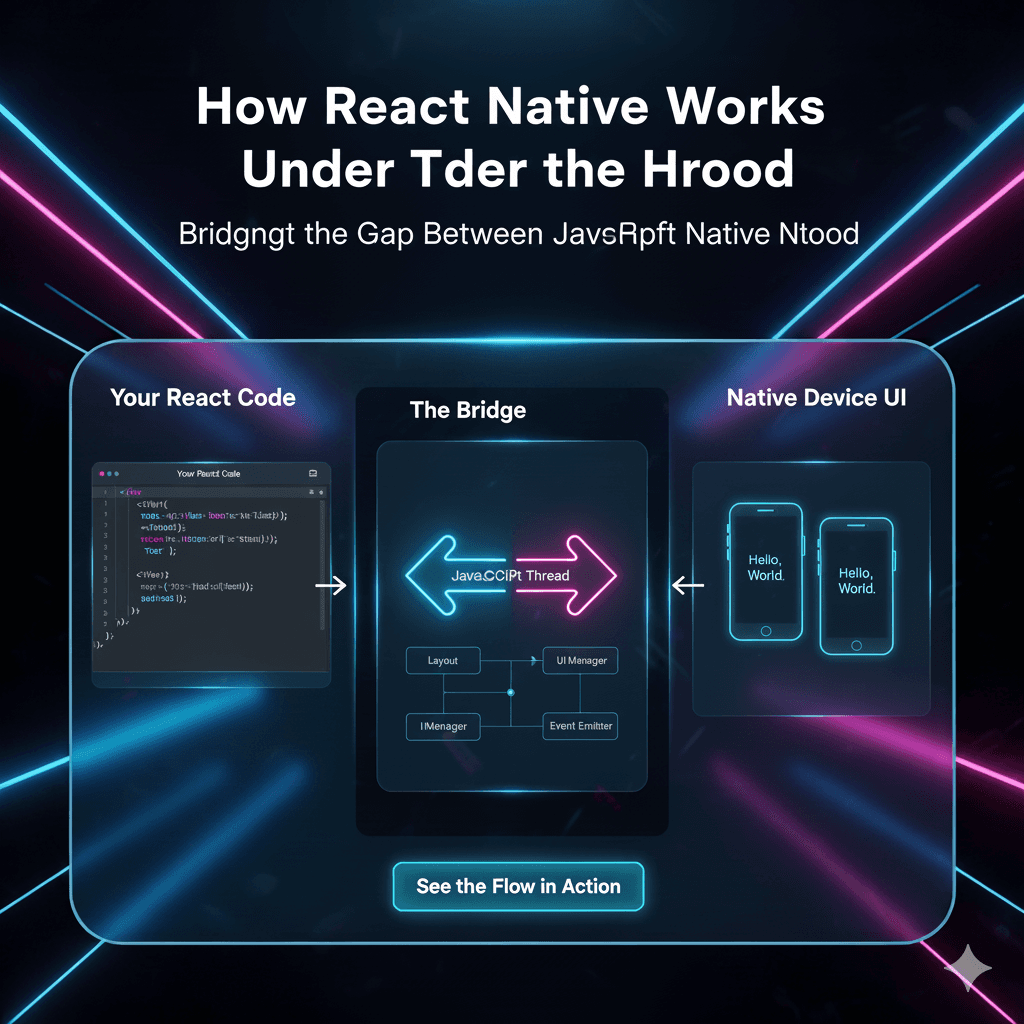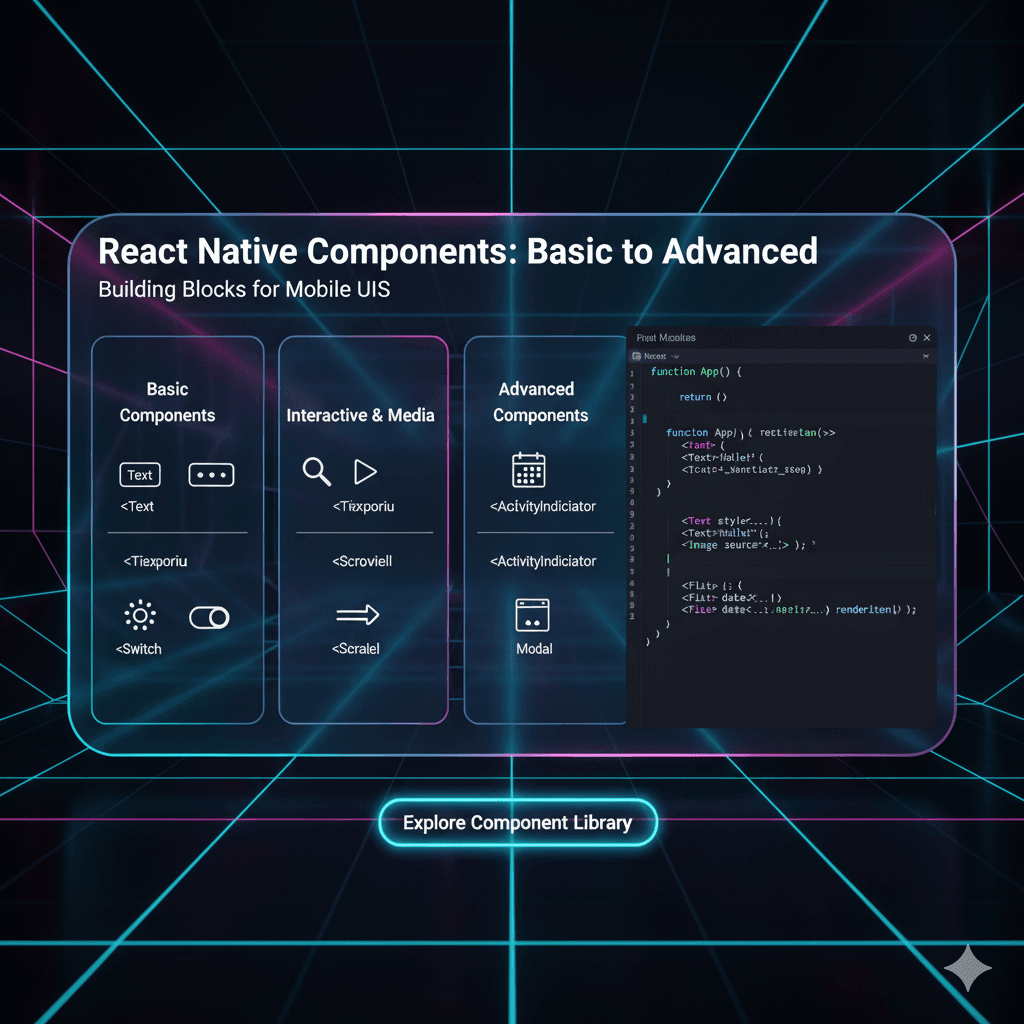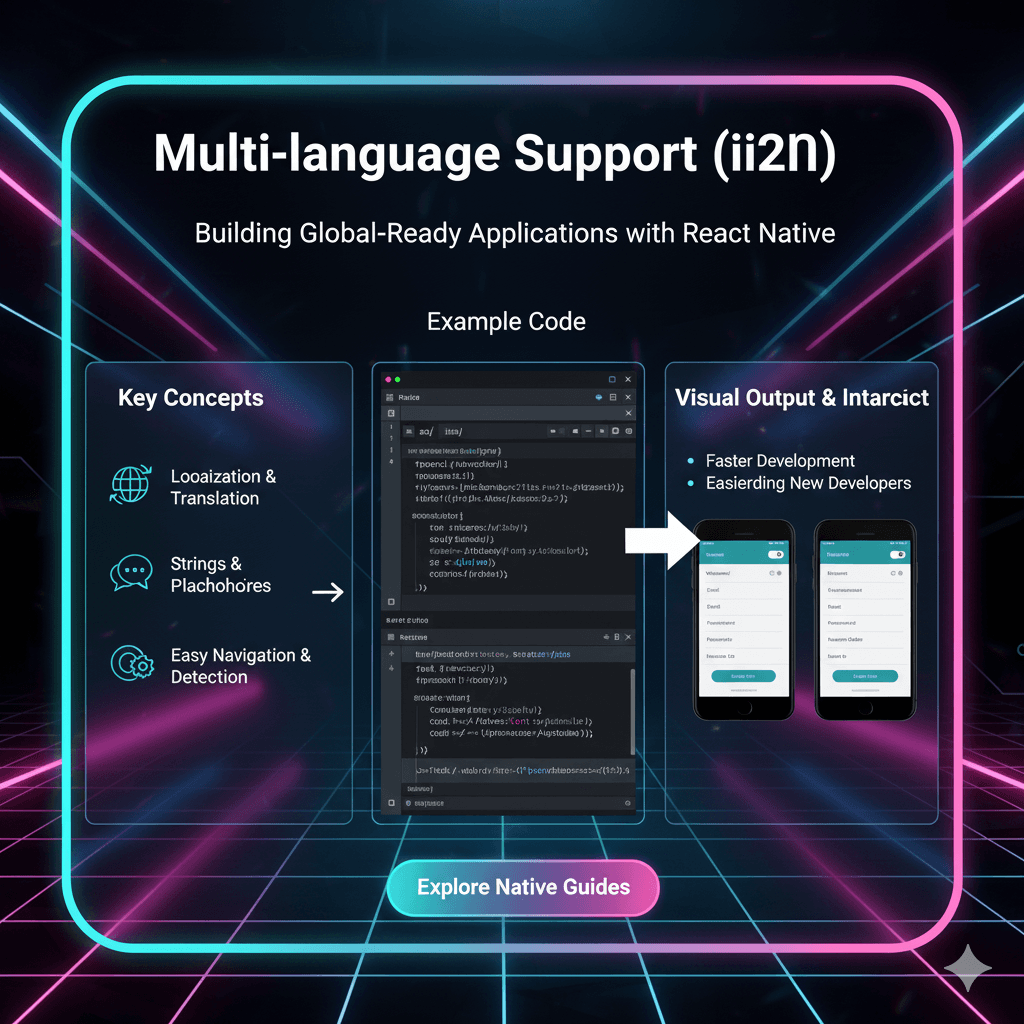TurboModules Explained: Supercharging Your React Native Apps

Confused by TurboModules? This in-depth guide breaks down what they are, how they work, and why they're a game-changer for React Native performance. Learn with real-world examples and best practices.

TurboModules Explained: Supercharging Your React Native Apps
TurboModules Explained: The Secret Sauce for Blazing-Fast React Native Apps
Alright, let's talk about React Native. You love it for building cross-platform apps with one codebase. But let's be real, you’ve probably also grumbled about the "bridge." That mysterious, sometimes-slow messenger between your JavaScript world and the native world (Java for Android, Objective-C/Swift for iOS).
For years, this bridge was a necessary evil. It worked, but it was asynchronous, had a limited data size, and could become a performance bottleneck. It was like trying to have a deep, complex conversation with someone by passing handwritten notes back and forth. It gets the job done, but it's not exactly efficient.
Then, the React Native team dropped a massive upgrade: The New Architecture. And at the heart of this new architecture, making the native side of things ridiculously powerful, is TurboModules.
If you're serious about building high-performance, silky-smooth React Native apps, you need to understand this. So, grab your favorite drink, and let's demystify TurboModules together.
What Are TurboModules, Actually?
In the simplest terms, TurboModules are the new, supercharged system for using native code (like a device's camera, Bluetooth, or a custom sensor) in your React Native app.
Think of it like this:
The Old Bridge (Legacy Native Modules): A dusty, two-lane road where messages (data) are carried by bicycles (JSON). It works, but there's a lot of waiting, and you can't send anything too heavy.
TurboModules: A multi-lane, futuristic hyperloop. Messages are sent instantly, you can send massive amounts of data, and the communication is direct and type-safe.
The key difference? TurboModules are lazy-loaded and strongly-typed. Let's break down what that actually means for you as a developer.
1. Lazy-Loaded: Goodbye to Startup Bloat
Remember how with the old system, all your native modules were initialized when the app started? Even if the user never visited the screen that used the fancy charting library? That meant slower app startup times.
TurboModules flip the script. A native module is only loaded when your JavaScript code actually calls it for the first time. This means your app launches faster because it's not busy setting up everything at once. It's a massive win for user experience.
2. Strongly-Typed: Bye-Bye, Silent Bugs
The old bridge used plain JSON to communicate. JavaScript is loosely typed, so you could easily pass a string where a number was expected, and you'd only find out at runtime, often with a cryptic crash.
TurboModules introduce a type-safe interface defined in a language called Codegen. You explicitly define what types of arguments your native functions expect and what they return. This catches errors at build time, before they can crash your user's app. It’s like having a super-strict compiler watching your back, and it's a game-changer for reliability.
How Do TurboModules Work? The Codegen Magic
The "New Architecture" relies on a static typing and build-time tool called Codegen. Here’s the flow:
You Define an Interface: You create a JavaScript file (usually with a
.jsor.tsextension) that describes the interface for your native module using a standard schema. This is your "source of truth."Codegen Runs: During the build process, the Codegen tool reads this interface file.
Codegen Generates Code: It automatically generates the boilerplate, type-safe code in C++, Java, and Objective-C. This generated code acts as the glue, ensuring that JS and native can talk to each other without any type mismatches.
You Write Native Code: You focus on writing the actual native business logic for your platform, filling in the skeletons generated by Codegen.
This process eliminates so much manual, error-prone work and makes your native modules robust and predictable.
Real-World Use Cases: Where TurboModules Shine
This isn't just theoretical. TurboModules are a big deal for specific scenarios:
Heavy-Duty Animation Libraries: Libraries like
react-native-reanimatedv2 were pioneers in adopting TurboModules. They need to send a constant stream of data between JS and native to achieve 60fps animations. The old bridge was a bottleneck; TurboModules set them free.Complex Video/Image Processing: If you're building a custom camera app or applying filters, you're dealing with massive amounts of data (pixels!). TurboModules allow you to pass this data efficiently without the serialization overhead of the old bridge.
High-Frequency Sensor Data: Apps that use the gyroscope, accelerometer, or magnetometer for AR, gaming, or fitness need to process data points incredibly quickly. TurboModules provide the low-latency communication channel needed for this.
Any Performance-Critical Custom Native Module: If you've ever built a custom native module and felt it was slower than it should be, TurboModules are your answer.
Best Practices for Getting Started with TurboModules
Ready to dive in? Here's how to think about TurboModules in your projects.
For New Apps: Embrace the New Architecture. If you're starting a new React Native project today (using v0.73 or later), you should enable the New Architecture from the get-go. The future is here, and it's stable.
For Existing Apps: Plan a Migration. Don't just rip out all your old native modules. The community is still in a transition phase. Start by:
Identifying Bottlenecks: Use your performance profiler. Which parts of your app feel slow? Which native modules are you using? Focus your migration efforts there.
Checking Library Compatibility: Before upgrading React Native, check if your critical third-party libraries (like navigation, state management, etc.) are compatible with the New Architecture. Most major ones are, but it's always good to check.
Migrating Your Custom Modules One by One. Convert your most important custom native modules to the TurboModule system to see the performance benefits firsthand.
Understanding these core architectural shifts is what separates good developers from great ones. It’s the kind of deep, professional knowledge that allows you to build truly exceptional software. To learn professional software development courses such as Python Programming, Full Stack Development, and MERN Stack, visit and enroll today at codercrafter.in. Our curriculum is designed to give you this architectural understanding, not just syntax.
TurboModules FAQ: Your Questions, Answered
Q: Do I need to rewrite all my app's code to use TurboModules?
A: Absolutely not! The beauty of the New Architecture is its backward compatibility (for now). Your old JavaScript code and most community libraries will work just fine. You only need to migrate the native parts when you need a performance boost or new features.
Q: Are TurboModules ready for production?
A: Yes! With React Native 0.72 and above, the New Architecture (including TurboModules) is considered stable and is being used by companies like Microsoft and Shopify in production. However, always test thoroughly.
Q: What's the difference between TurboModules and Fabric?
A: Great question! They are two pillars of the New Architecture.
TurboModules deal with native functionality (e.g., calling a native API).
Fabric is the new rendering system for your React components (e.g., how a
<View>becomes a nativeUIView).
They work together to make your app faster from the ground up.
Q: Is this going to make my job harder?
A: In the short term, there's a learning curve. Defining interfaces with Codegen is a new step. But in the long term, it makes your job easier and your apps better. Fewer runtime crashes, better performance, and a more predictable system are always wins.
Conclusion: The Future is Turbocharged
TurboModules aren't just an incremental update; they're a fundamental rethinking of how React Native interacts with the native platform. By being lazy-loaded and strongly-typed, they solve the core performance and reliability issues that have plagued the framework for years.
The transition is happening now. As a developer, getting ahead of the curve and understanding these concepts will be invaluable. It empowers you to build apps that are not just functional, but truly feel native—fast, responsive, and robust.
So, the next time you're working on a React Native app, think about that hyperloop. And ask yourself: are you still sending notes, or are you ready to go Turbo?
Want to build a deep, foundational understanding of modern software architectures like this? To learn professional software development courses such as Python Programming, Full Stack Development, and MERN Stack, visit and enroll today at codercrafter.in. Let's build the future, together.








